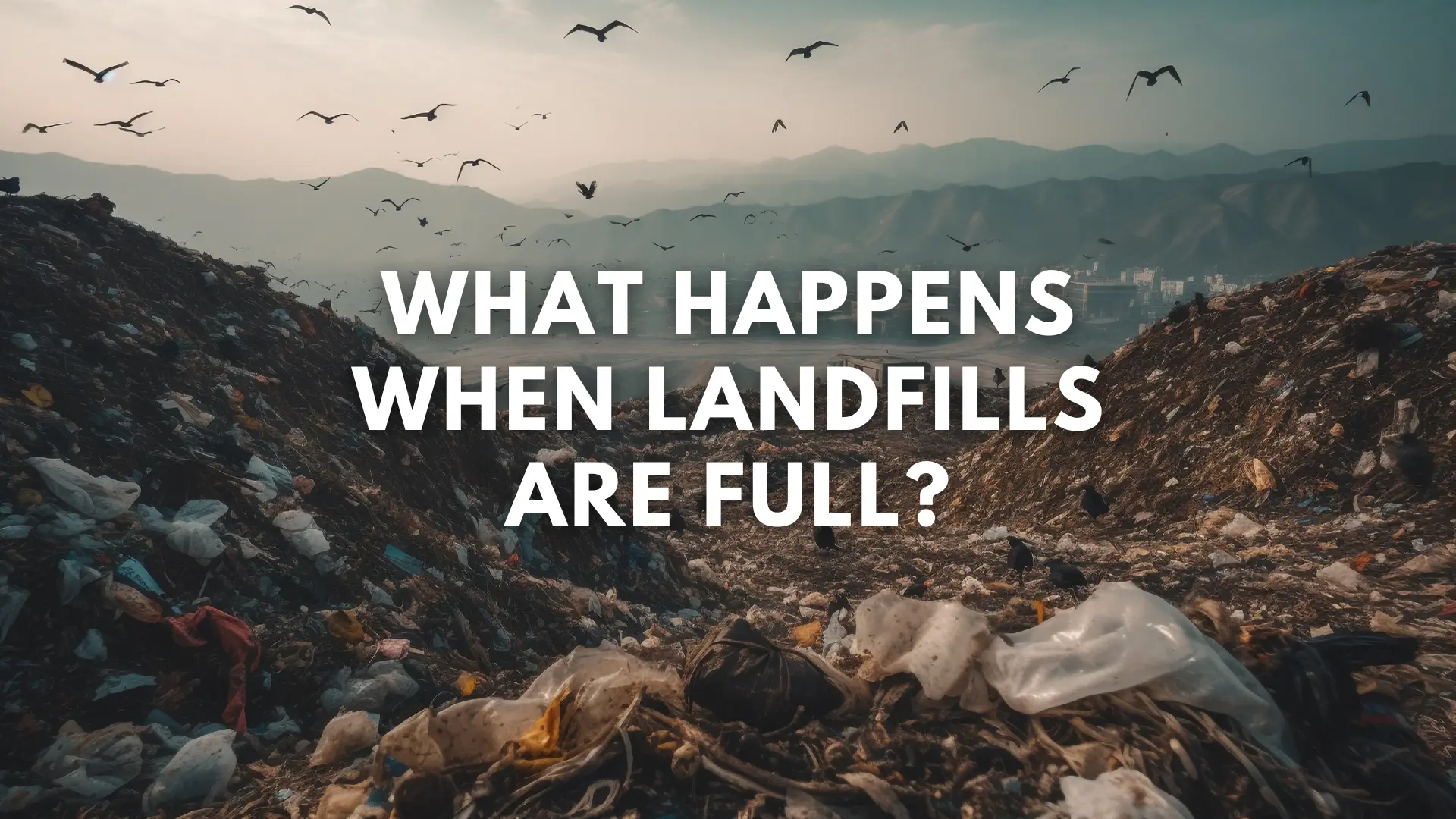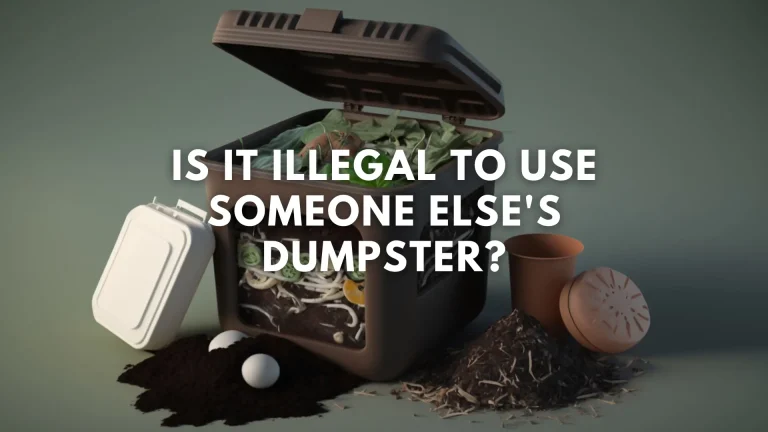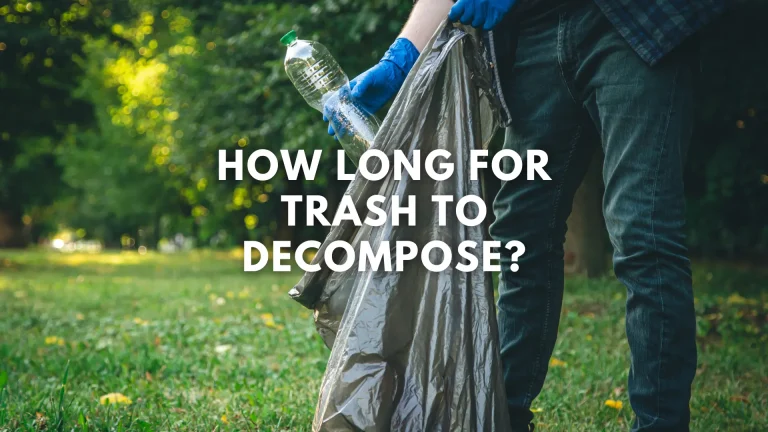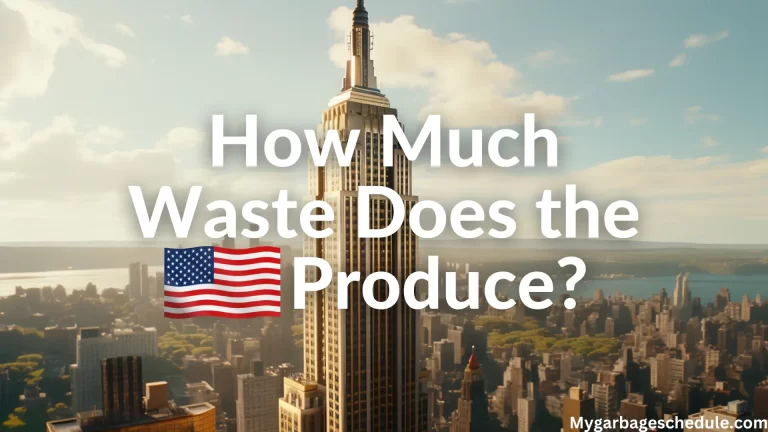What Happens When Landfills Are Full?
A landfill is an area of land that is used to dump garbage and everything that isn’t recyclable in one spot. There are 3,000 active landfills in the US that are holding heaps of trash but according to a new report by the Solid Waste Environmental Excellence Protocol (SWEEP) they are nearing their full capacity. And what happens when landfills are full?

What Happens when Landfills are Full?
Once filled, they are covered and compressed for construction use but cannot be reused as landfills.
As a result, the US will likely be run out of room in landfills within 18 years, potentially creating an environmental disaster.
To ensure environmental sustainability, effective waste sorting systems and necessary measures are important.
What is Causing Overcrowded Landfills?
How are landfills becoming full in very short periods of time? Let’s see in detail.
Rapid Filling of Landfill Space
As time goes by, more and more people are living in cities and things are getting better in terms of development. But because there are more people, we’re using and throwing away a lot more stuff.
A big problem is that we’re making a ton of garbage – the average person in the U.S. throws away about 5 pounds of trash every day!
All this garbage is filling up huge areas of land called landfills. We keep using the ones we have, and then we have to spend a lot of money to get more land just to dump our trash.
Building a new landfill can cost billions of dollars. If we keep using them too much, we might run out of space in the future.
Decrease in active landfills over the years
Right now, there are more than 3,000 places in the U.S. where we throw away our trash, and 10,000 others that we used in the past. These places, called landfills, are really important for getting rid of our garbage. But if we don’t take care of them, it could cause big problems for the climate.
Building new landfills is tough because many communities don’t want them. People worry that landfills might pollute the air, water, and soil around them. Also, making new landfills can take a long time.
When our food and other garbage break down in landfills, they release a gas called methane, which is bad for the environment.
To fix this, experts say we should make less trash and use the landfills we have more carefully. This means everyone—government, companies, and people like us—needs to work together to stop making so much garbage.
Easy Waste Reduction Tips
- Recycling: Recycling is key, and thanks to technology, almost all types of waste can be recycled. This includes glass, paper, metals, plastic, and more. Recycling helps recover raw materials, saving water and energy and preventing land degradation.
- Zero Waste Philosophy: This is about using resources wisely. It encourages reusing products and aims to send nothing to incinerators, landfills, or oceans. It’s not just about recycling; it’s a broader approach to managing resources efficiently
- Composting: Composting is a simple and natural way to deal with kitchen and plant waste. Done right, it turns organic waste into nutrient-rich food for plants. It’s an excellent method to recycle organic rubbish and reduce landfill waste.
Keep yourself updated with the composting and recycling schedules at Mygarbageschedule.com.
Landfill Regulation and Safety
Building and managing landfills is a big job. It takes a long time, and we need to follow strict rules to keep things safe. First, we study how the landfill might affect the environment and get people’s opinions. After that, we collect the needed permissions from the government, funds and the public votes on it.
In 1988, the U.S. started controlling how landfills work with the Resource Conservation and Recovery Act. This law says each landfill must have protective liners. It also needs plans to watch over and check the place for at least 30 years after closing to keep it safe.
Transformation into Community Parks
One of the most popular uses of a landfill is to transform them into a community park. According to an estimate there could be more than 1,000 parks sitting on old dump sites.
For example: Virginia Beach is home to one of the most famous landfill parks. Also Known as “Mount Trashmore,” is a 165-acre tourist attraction on compacted layers of solid waste and clean soil. The capped landfill now covers man-made mountains, lakes, playgrounds, a skate park and paths for walking and biking.
Going Green with Landfill Energy Projects
Old landfills are sometimes turned into sites that make energy from the gas they produce. This isn’t new, and the electricity created is often used to power our homes and cars.
Some places also put solar panels on old landfills. New Jersey has done this in many spots, using a landfill in Burlington County to generate renewable energy.
But, there’s a problem. When the trash breaks down, the ground can change, making it hard to build things like solar panels. This challenge stops us from doing this everywhere.
Protecting Natural Habitats on Old Landfill Sites
Some people who care about nature want to change old landfills into places where wildlife can live. Before making it a home for animals, they check if the soil can support native plants. Once they find the right spots, they plant native trees, plants, and grasses and let them grow on their own.
An example is the Alliance Landfill in Taylor, PA. They planted vegetation in good spots, and in two years, more birds and animals started living there. The Wildlife Habitat Council supports these landfill wildlife habitats and wants efforts to keep helping animals in these places.
Frequently Asked Questions (FAQs)
What can be done to address landfill issues?
Waste reduction tips include recycling, adopting a zero-waste philosophy that encourages reusing products, and embracing composting to reduce organic waste.
Why is landfill regulation important?
Landfill regulation, governed by acts like the Resource Conservation and Recovery Act since 1988, ensures the safe construction, maintenance, and monitoring of landfills.
Work on Zero-Waste Lifestyle
Landfills help to keep our communities clean, but they are serious threats to our environment. Working towards living a zero-waste lifestyle will help us reduce our dependence on landfills.
Also utilizing filled landfill into community parks, an energy production site is a good enough practice.


